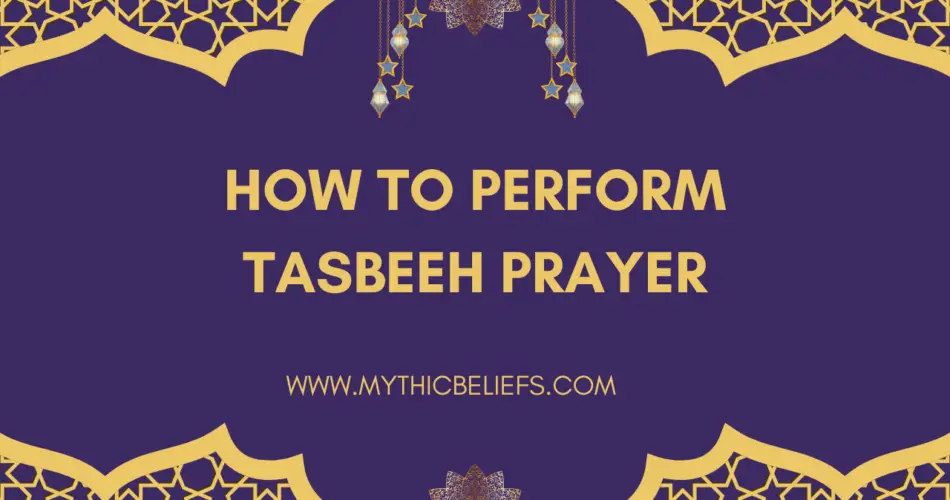There’s something incredibly peaceful about the rhythmic repetition of dhikr (remembrance of God). It’s like a steady heartbeat, a grounding force in the chaos of everyday life. One of the most spiritually uplifting prayers in Islam is Salatul Tasbeeh, a beautiful way to seek forgiveness and draw closer to Allah.
Lately, with the world moving at breakneck speed, more people are turning to structured prayers like this to find inner peace. Social media is full of personal stories about how Tasbeeh prayer has helped people combat anxiety and reconnect with their faith. If you’re looking to give it a try but aren’t quite sure how, don’t worry—I’ve got you covered.
How Do You Pray on Tasbeeh?
First off, let’s talk about Tasbeeh itself. You’ve probably seen those prayer beads (also called a misbaha or tasbih) in your local mosque or even online. They’re often used to count praises of Allah, and in the case of Salatul Tasbeeh, they play a symbolic role. But don’t stress if you don’t have beads—you can easily keep count on your fingers.
This prayer is unique because it includes a specific dhikr—Subhanallahi walhamdulillahi wala ilaha illallahu wallahu akbar (Glory be to Allah, and all praise is for Allah, and there is no deity except Allah, and Allah is the Greatest). This phrase is repeated a total of 300 times throughout the prayer. Sounds like a lot? Trust me, once you get into the rhythm, it feels incredibly rewarding.
How Do You Pray Salatul Tasbeeh Step by Step?
Alright, let’s get into the step-by-step breakdown. Whether you’re praying alone or in a congregation, follow these steps:
- Make the intention (niyyah): Before starting, silently intend that you are praying Salatul Tasbeeh for the sake of Allah.
- Pray four rakats (units) like any other voluntary prayer, with Surah Fatiha and another Surah in each rakat.
- The unique part: In each rakat, you’ll recite the Tasbeeh phrase 75 times in different positions:
- After Surah Fatiha and the additional Surah (15 times)
- In ruku (bowing) after saying Subhana Rabbiyal Azeem (10 times)
- After standing up from ruku (10 times)
- In sujood (prostration) after saying Subhana Rabbiyal A’la (10 times)
- While sitting between two sujoods (10 times)
- In the second sujood (10 times)
- Before moving to the next rakat (10 times)
- Repeat this pattern in all four rakats until you complete the prayer.
At first, it might feel a little overwhelming keeping track of the Tasbeeh count. I remember my first time—I kept second-guessing myself, thinking, “Wait, did I say it 10 times or 11?” But over time, muscle memory kicks in, and it becomes second nature. If you lose count, just continue and do your best—Allah knows your intention.
How Many Rakats Are in Salatul Tasbeeh?
Salatul Tasbeeh consists of four rakats, and it can be prayed either all at once or in two sets of two. The Prophet Muhammad (peace be upon him) recommended performing this prayer at least once in a lifetime, but if you can, doing it daily, weekly, or even monthly is beneficial.
If you’re anything like me, finding the time can be tricky. Between work, family, and the endless distractions of modern life (hello, scrolling through Instagram for no reason), setting aside time for a non-obligatory prayer feels like a challenge. But the feeling afterward? Absolutely worth it.
Why Tasbeeh Prayer Feels More Relevant Than Ever
With the world constantly buzzing, it’s easy to get lost in stress and worries. Lately, I’ve noticed a trend of people sharing their personal spiritual routines on TikTok and YouTube, emphasizing mindfulness in Islamic worship. Salatul Tasbeeh fits right into this movement—it forces you to slow down, focus, and realign your thoughts with something greater than yourself.
Many people find that repeating the dhikr during prayer helps them manage anxiety and improve concentration. Studies even suggest that structured meditation-like practices can significantly reduce stress levels, and Salatul Tasbeeh offers just that—spiritual meditation through prayer.
Final Thoughts
If you’ve never tried Salatul Tasbeeh before, consider giving it a shot. It’s not about perfection—it’s about sincerity. Whether you’re praying for peace, forgiveness, or just a closer connection with Allah, this prayer offers a beautiful way to reflect and reset.
Have you ever prayed Salatul Tasbeeh? If so, how was your experience? Drop a comment and let’s share our reflections!
